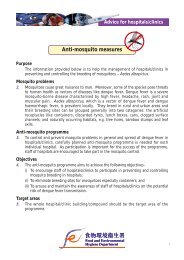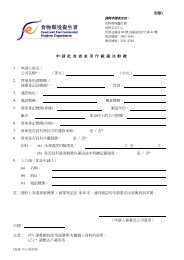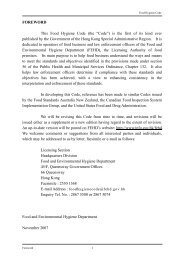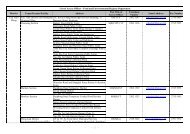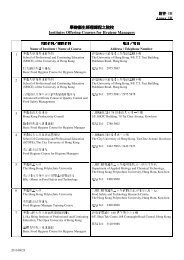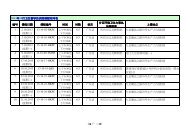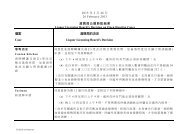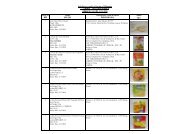Download the whole document (PDF file, 1311 KB)
Download the whole document (PDF file, 1311 KB)
Download the whole document (PDF file, 1311 KB)
Create successful ePaper yourself
Turn your PDF publications into a flip-book with our unique Google optimized e-Paper software.
Chapter 4 Basic requirements for a Food Safety Plan<br />
E. Staff training<br />
Training offers food handlers a better understanding of how food can become contaminated,<br />
and how foodborne illnesses can be avoided through proper food handling procedures. Each<br />
food business must decide what training <strong>the</strong>ir food handlers need by identifying <strong>the</strong> areas of <strong>the</strong>ir<br />
work most likely to affect food hygiene and safety.<br />
Examples of basic knowledge of food safety:<br />
• Main factors contributing to outbreaks of foodborne illnesses<br />
• Temperature control of potential hazardous foods<br />
• Proper ways of using equipment (e.g. <strong>the</strong> skill of using <strong>the</strong>rmometer, knowledge of handling<br />
cooking and storage equipment)<br />
Examples of basic knowledge of food hygiene:<br />
• Skills and significance of maintaining good personal hygiene practices<br />
• Knowledge and skills of cleaning and sanitising<br />
• Pest control<br />
• It is a good practice for a business to identify <strong>the</strong> training needs of each staff<br />
member<br />
• It is also a good practice to keep training records of every staff member<br />
• Training needs should be reviewed on a regular basis and should be<br />
assessed against <strong>the</strong> role and responsibilities, existing skills, experience and<br />
previous training of <strong>the</strong> staff<br />
• An example of a staff training record sheet is provided in Appendix 16<br />
F. Handling customer complaints<br />
Customer complaints should be handled carefully because <strong>the</strong>y help reflect possible problems<br />
that may be overlooked by <strong>the</strong> management during food production. Depending upon <strong>the</strong> results<br />
of investigation, appropriate amendments to <strong>the</strong> FSP should be made where necessary.<br />
• Establish complaint handling procedures<br />
• Document all customer complaints<br />
• Record details including <strong>the</strong> date, customers details, reasons for complaining<br />
and action taken<br />
• An example of a customer complaint record sheet is provided in<br />
Appendix 17<br />
22



